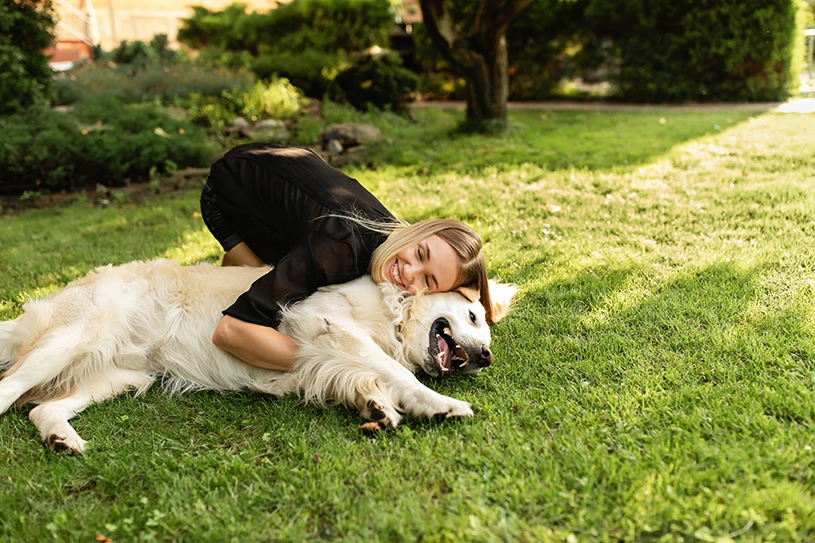Cats and dogs don’t dissipate heat in the same way humans do, and they are not as good at it either. Their main way to cool off is dissipating heat through panting or sweating through their footpads. Both of these methods can easily be insufficient on a sunny day or in a hot environment like a closed car o house where fresh water and cool winds are not available to help lower the temperature.
These, mostly unmonitored, circumstances lead to your pet getting dangerously hot. A high temperature in dogs or cats for a prolonged time can result in organ damage or even death if your pet doesn’t undergo treatment immediately. Even though most of the time, the effects caused by heat exhaustion or heatstroke can be reversed by a team that offers proper treatment, pet owners should not underestimate how dangerous it is.
Heatstroke is especially dangerous for the younger dogs and cats as well as for the elderly ones as they are not able to dissipate the heat as they should. Pets with previous medical conditions are also more susceptible to heatstroke. Dogs and cats with shorter noses also have difficulty regulating their temperature.
What Is Heatstroke?
Heatstroke occurs when the body’s temperature is excessively high, and the cat or dog can’t lower it on its own, causing damaging effects on the animal. It is also called hyperthermia.
For cats, their normal temperature is between 99.5 and 102.5 degrees Fahrenheit, while it’s around 101.5 degrees for dogs. Anything above these temperatures could mean that your pet is suffering from either heat exhaustion or, even worse, heatstroke.
Although heat exhaustion is not as serious as a heatstroke, every pet owner should know that immediate treatment is required. Furthermore, a visit to the closest pet hospital should follow whenever dealing with any of these situations.
It is not uncommon or difficult for a pet to suffer from heatstroke. Leaving them in a car without air conditioning can raise their temperature high enough for it to be life treating in a matter of minutes.
The same happens at home or in any hot environment that doesn’t have shaded areas, cool winds, or fresh water. Your pet’s temperature can also rise dangerously high when taking them for a walk, so always be sure to go out before or after the hottest hours of the day. Also, be sure to have water for them and make regular stops at shaded areas.
Heatstroke Symptoms
Noticing symptoms of heatstroke on your cat or dog is relatively easy, but the important part is noticing as soon as possible so always be sure to check on your pets. Remember that they don’t handle heat as well as us, so environments that aren’t too hot for you can be dangerous to them.
A few common symptoms between cats and dogs of heatstroke are:
- Excessive drooling,
- Stumbling,
- Dizziness,
- Excessive panting,
- High rectal temperature,
- Tremors,
- Vomiting,
- Change in the color of their gums, and
- Sweating through their footpads.
Although they don’t always mean a heatstroke, it’s very important for the pet owner to check their pet carefully to avoid further complications.
Heatstroke in Cats
There are a few things to consider when checking for heatstroke symptoms in a cat. As said in the Sprucepets, if they are panting, it means they are already in trouble. Drooling is also uncommon in cats, so its presence is another danger indicator. Most cats will also groom themselves excessively to try to cool off.
Heatstroke in Dogs
Although panting and drooling are very common in dogs, they are also indicators of heatstroke. It is essential to pay attention to your dog to see if they are panting or drooling excessively. Having a dry nose or sunken eyes is a sign of dehydration which could mean heat exhaustion or heatstroke.
How to Treat Heatstroke
The first thing to do to treat your cat or dog’s heatstroke is to remove them from the hot environment and move them into a cool, ventilated area. To lower the temperature, soak your cat or dog with cool, not cold, water and make sure to get its underside as well. You can try placing them on top of a soaked towel so their feet can cool off too. If you have a fan around, use it to blow cool air towards them.
As said previously, do not use cold water as you can shock your pet with the sudden temperature change. If you drop the temperature of your cat or dog too much, they could end up suffering from hypothermia.
Monitor your pet’s temperature; when the temperature drops to 103 degrees, stop any cooling activity to avoid overdoing it. This applies to both dogs and cats.
Offer them cool water as soon as possible, and don’t force them to drink if they don’t want to.
Regardless if you have successfully lowered their temperature or not, go to your closest animal hospital. Even if properly cooled off, a cat or dog can present a variety of complications that are not easily noticeable, so it’s imperative that a professional checks them and applies any treatment if necessary.
If you have any questions regarding how to treat heatstroke in dogs or cats, call Central Orange County Emergency Animal Hospital at +1 949 763 3436, or if you require a pet Doctor in Newport Beach, we are here for you.



